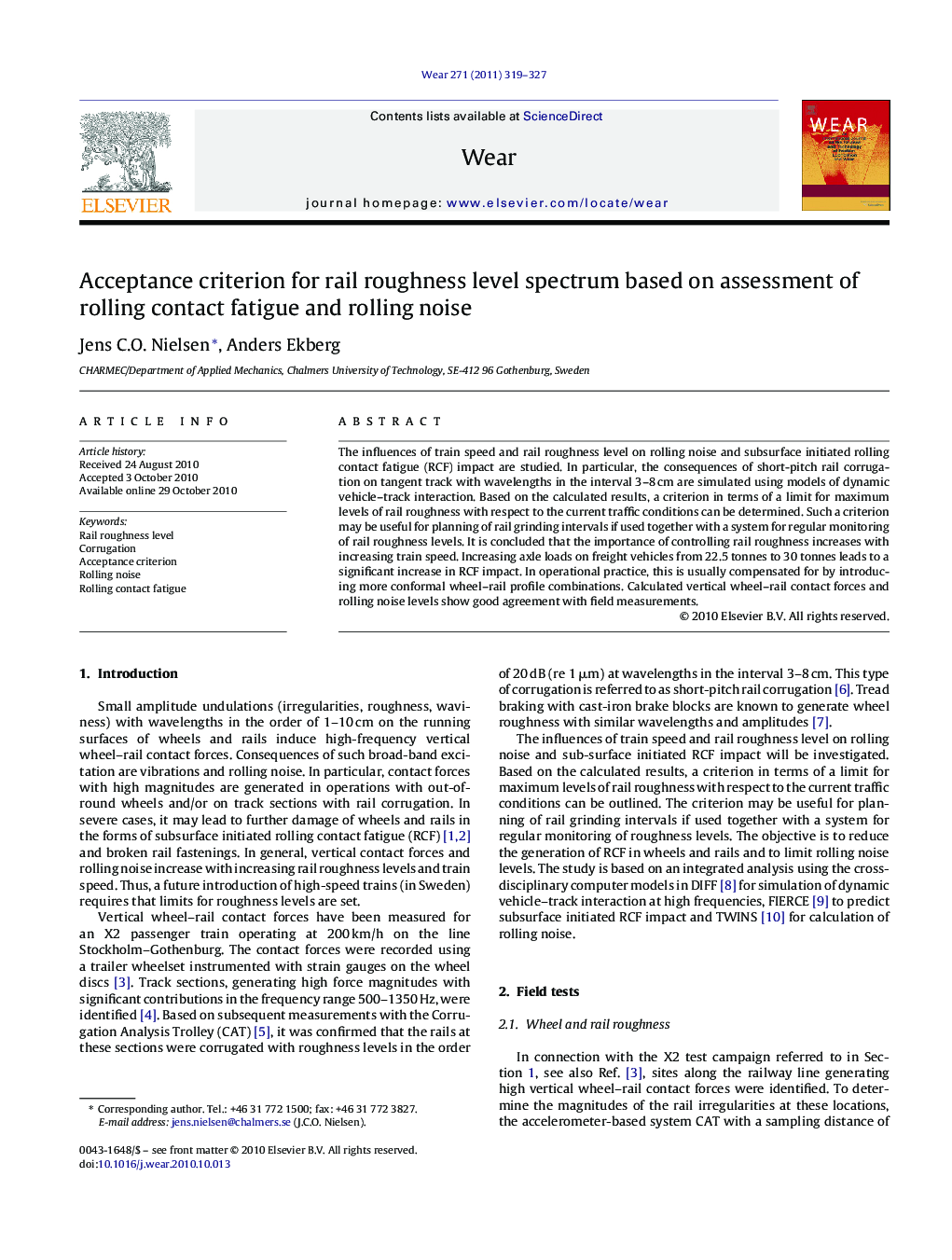| Article ID | Journal | Published Year | Pages | File Type |
|---|---|---|---|---|
| 618285 | Wear | 2011 | 9 Pages |
The influences of train speed and rail roughness level on rolling noise and subsurface initiated rolling contact fatigue (RCF) impact are studied. In particular, the consequences of short-pitch rail corrugation on tangent track with wavelengths in the interval 3–8 cm are simulated using models of dynamic vehicle–track interaction. Based on the calculated results, a criterion in terms of a limit for maximum levels of rail roughness with respect to the current traffic conditions can be determined. Such a criterion may be useful for planning of rail grinding intervals if used together with a system for regular monitoring of rail roughness levels. It is concluded that the importance of controlling rail roughness increases with increasing train speed. Increasing axle loads on freight vehicles from 22.5 tonnes to 30 tonnes leads to a significant increase in RCF impact. In operational practice, this is usually compensated for by introducing more conformal wheel–rail profile combinations. Calculated vertical wheel–rail contact forces and rolling noise levels show good agreement with field measurements.
Research highlights▶ A reference short-pitch rail corrugation spectrum has been derived. ▶ Development of acceptance criterion regarding noise emission and RCF risk. ▶ Demonstration on employing the criterion to analyze altered operational conditions. ▶ Significantly improve means of planning preventive actions, e.g. grinding.
